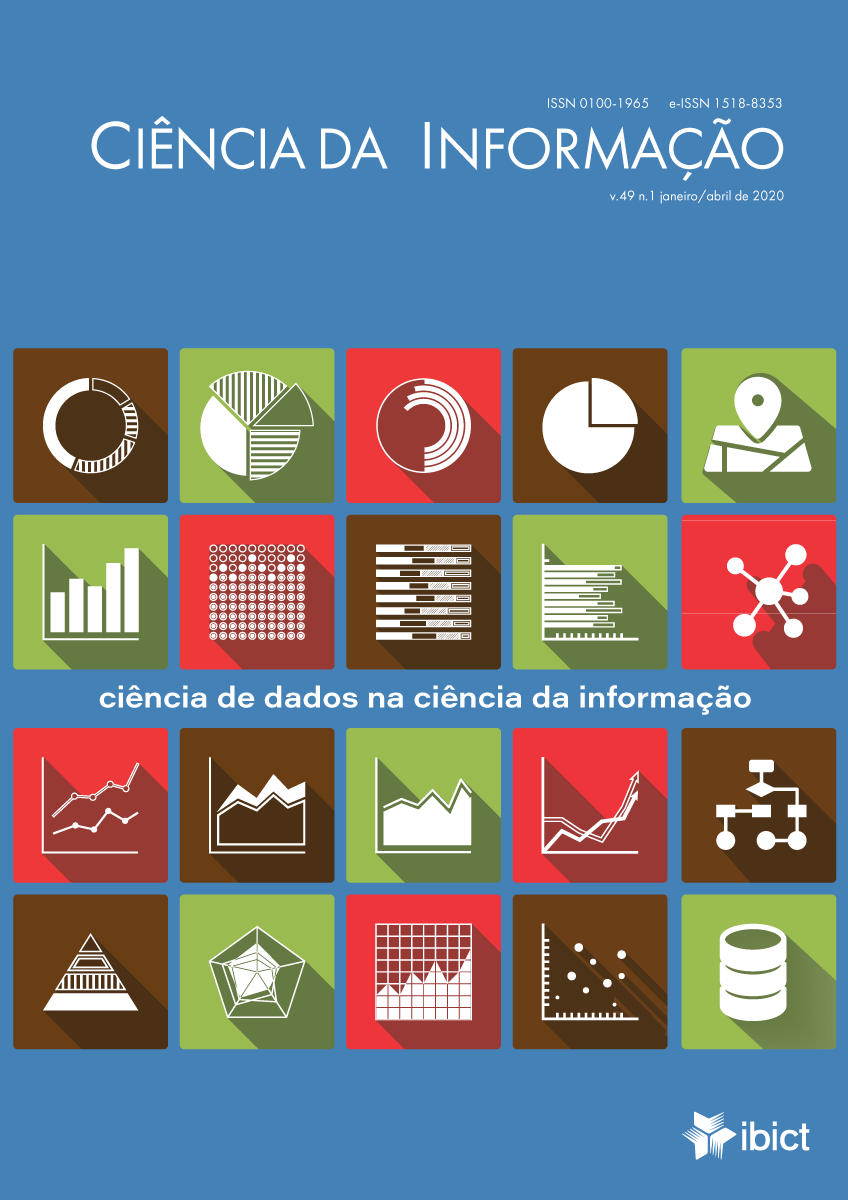A population model to academic genealogy analysis
DOI:
https://doi.org/10.18225/ci.inf.v49i3.5466Keywords:
Advisor-advisee relationships, Academic carrer, Population modelAbstract
Recent studies have analyzed the formation of new scientists at the master’s and doctorate levels. However, such analyzes does not take into account how the academics’ career are. In this sense, this work expands the analysis of the relationships established between advisors and advisees towards a population growth model. We apply this model to a group composed of more than 1 million formal mentoring relationships established at the masters and doctoral levels, and at the post-doctoral supervision. The main contributions of this work are as follows. (a) The building of a population model applicable to academic genealogy graphs, (b) the indication of a decrease in the percentage of academics who become advisors themselves, and (c) the indication that senior academics have higher productivity when compared to other academic categories.
Downloads
References
BACAËR, N. A short history of mathematical population dynamics. Springer Science & Business Media, 2011. DOI: 10.1007/978-0-85729-115-8
CENTRO DE GESTÃO E ESTUDOS ESTRATÉGICOS (CGEE). Mestres e doutores 2015 - Estudos da demografia da base técnico-científica brasileira. Brasília/DF, 348 p., 2016.
DAMACENO, R. J. P.; ROSSI, L.; MUGNAINI, R.; MEMA-CHALCO, J. P. The Brazilian academic genealogy: evidence of advisor–advisee relationships through quantitative analysis. Scientometrics, v. 119, n. 1, p. 303-333, 2019. DOI: 10.1007/s11192-019-03023-0
ERDÖS, P.; RÉNYI, A. On the strength of connectedness of a random graph. Acta Mathematica Hungarica, v. 12, n. 1-2, p. 261-267, 1961.
JACKSON, M. O.; ROGERS, B. W. Meeting strangers and friends of friends: How random are social networks? American Economic Review, v. 97, n. 3, p. 890-915, 2007. DOI: 10.1257/aer.97.3.890
MALTHUS, T. R.; WINCH, D.; JAMES, P. Malthus: An Essay on the Principle of Population. Cambridge University Press, 1992.
DE SOLLA PRICE, Derek John. Little science, big science. New York: Columbia University Press, 119 p., 1963.
ROSSI, L.; DAMACENO, R. J.; FREIRE, I. L.; BECHARA, E. J., & MENA-CHALCO, J. P. Topological metrics in academic genealogy graphs. Journal of Informetrics, v. 12, n. 4, p. 1042-1058, 2018. DOI: 10.1016/j.joi.2018.08.004
ROSSI, L; FREIRE, I. L.; MENA-CHALCO, J. P. Genealogical index: A metric to analyze advisor–advisee relationships. Journal of Informetrics, v. 11, n. 2, p. 564-582, 2017. DOI: 10.1016/j.joi.2017.04.001
WU, Y.; VENKATRAMANAN, S.; CHIU, D. A Population Model for Academia: Case Study of the Computer Science Community using DBLP Bibliography 1960-2016. IEEE Transactions on Emerging Topics in Computing, 2018. DOI: 10.1109/tetc.2018.2855156
Downloads
Published
Issue
Section
License
Copyright (c) 2020 Rafael Jeferson Pezzuto Damaceno, Maximiliano Barbosa da Silva, Jesús Pascual Mena Chalco

This work is licensed under a Creative Commons Attribution-ShareAlike 4.0 International License.
- This publication reserves the right to modify the original, regarding norms, spelling and grammar, in order to maintain the standards of the language, still respecting author writing style;
- The final proofs will not be sent to the authors;
- Published works become Ciência da Informação's property, their second partial or full print being subject to expressed authorization by IBICT's Director;
- The original source of publicaton must be provided at all times;
- The authors are solely responsible fo the views expressed within the article;
- Each author will receive two hard copies of the issue, if made availalbe in print.




























